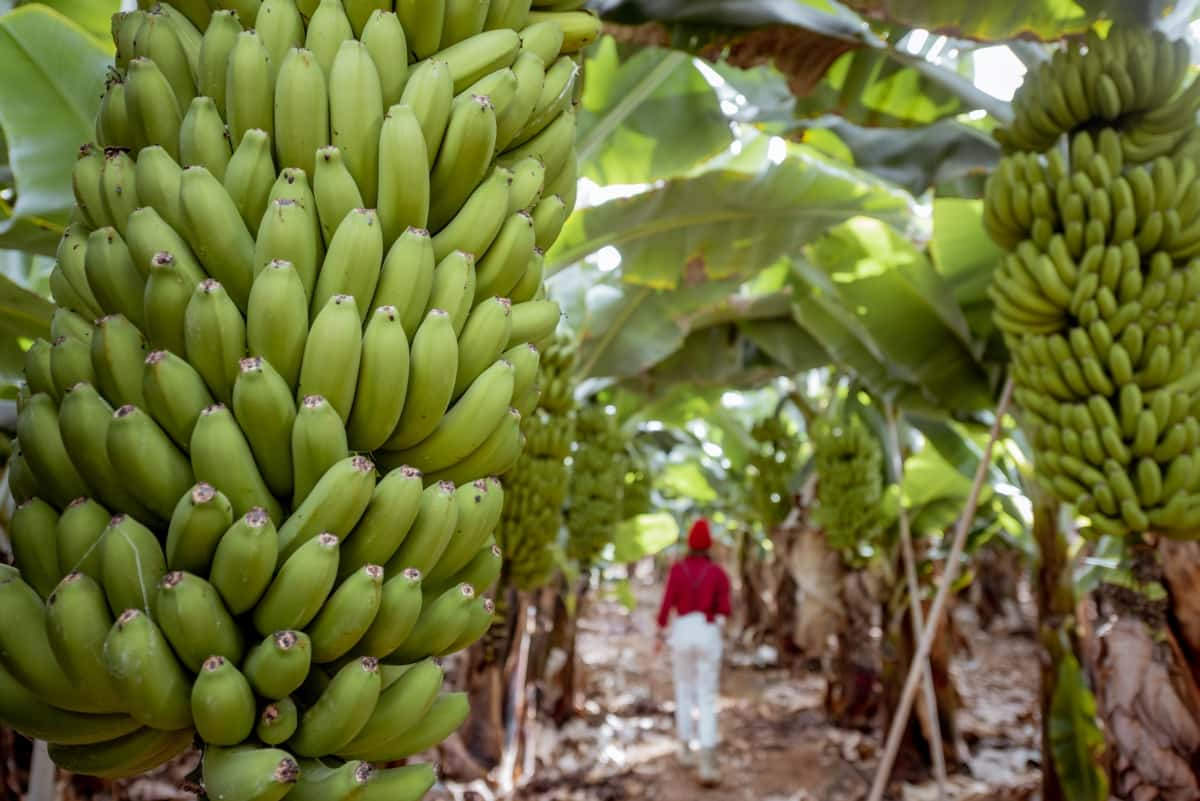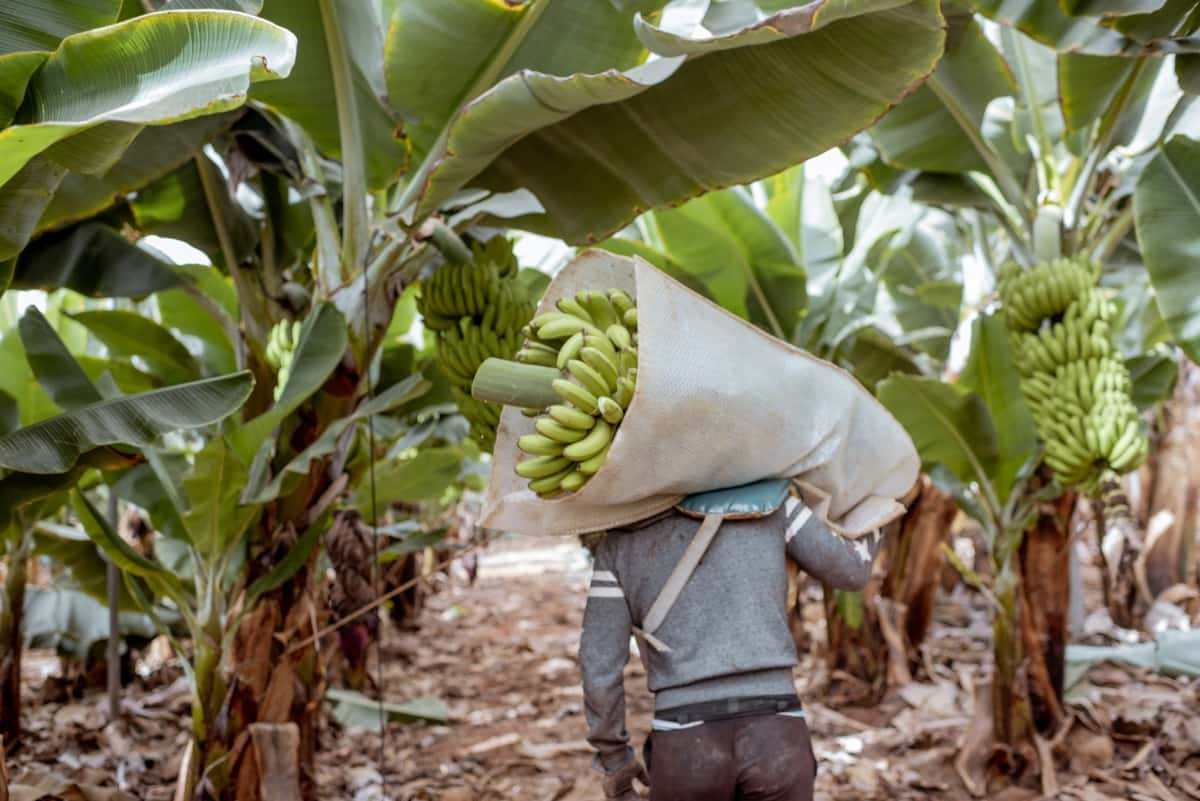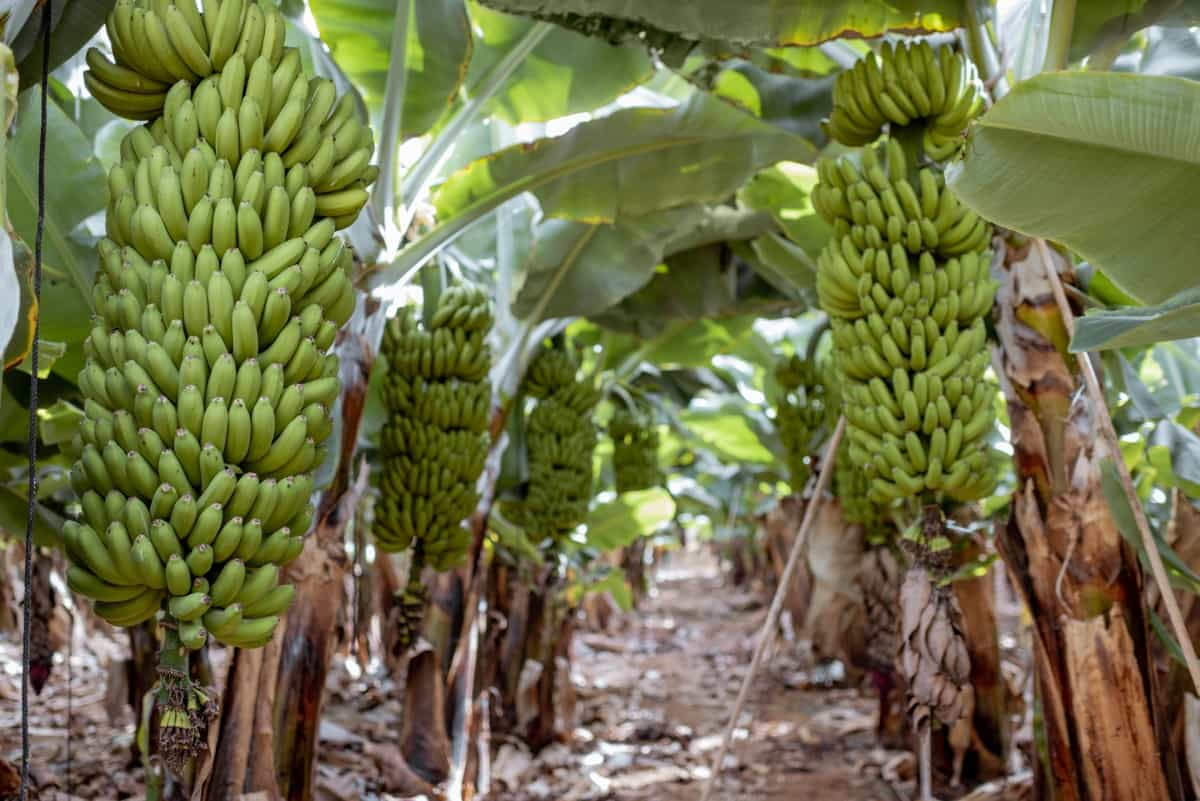Bananas are one of the most popular and widely consumed fruits globally. Proper harvesting and post-harvest handling practices ensure that bananas reach consumers in the best possible quality. This process involves various stages, from harvest timing to marketing and sales.

Harvesting and Post-Harvest Handling of Bananas
Timing of Harvesting in Banana
The timing of harvesting bananas, whether dwarf or tall cultivars, is influenced by various factors. Dwarf banana plants typically mature more quickly than tall varieties. Dwarf bananas are generally ready for harvest within 12 to 14 months after planting, while tall cultivars require more time, usually taking about 14 to 16 months to reach maturity. The actual timing can vary based on climate and cultural practices.
Climate plays a crucial role, as temperature and rainfall patterns affect the growth and maturation of banana bunches. In areas with a warmer climate, bananas tend to mature more rapidly. Cultural practices, including fertilization, irrigation, and disease management, also impact the timing of harvesting. Proper care and maintenance can expedite the growth and development of banana plants. Banana growers need to monitor their plants’ progress and assess the bunches’ readiness by considering factors like size, color, and taste.
Pre-Harvest Preparation of Banana
Monitoring Maturity: Bananas should be harvested when they have reached the desired level of maturity. This is typically determined by fruit size, color, and taste. Maturity indicators can vary depending on the banana variety, so it’s important to understand the specific characteristics of the variety you are growing.
Checking Fruit Size: The size of the bananas should be appropriate for the variety and market requirements. Smaller bananas are typically harvested earlier, while larger ones can mature further on the plant.
Monitoring Fruit Color: The color of the banana peel is an important indicator of maturity. Depending on the banana variety, the peel may change from green to yellow, sometimes red or brown. The exact color change depends on the variety.
Taste Testing: Taste testing is a subjective but crucial method to determine the readiness of bananas for harvest. Sample a few fruits from different parts of the bunch and taste them to ensure they have the desired flavor and sweetness.
Monitoring Weather Conditions: Harvesting should ideally be done during dry weather to prevent the fruit from getting wet, which can lead to disease and reduce fruit quality.
Gathering Harvesting Tools: Ensure you have the necessary tools for harvesting, such as a sharp knife or machete, gloves, and containers or baskets for collecting the harvested bunches.
In case you missed it: How Drip Irrigation in Banana Plantations Will Increase Fruit Size and Yields

Harvesting Techniques for Banana
Harvesting bananas requires precision to ensure optimal quality and minimal damage. Hand harvesting is the most common method, where skilled workers use sharp tools like machetes to cut bunches when they reach the desired stage of maturity, typically when they have developed a full-size, well-rounded shape and have turned from green to yellow.
Supporting heavy bunches to prevent damage during harvest is crucial. Careful handling is essential to prevent bruising, as bananas are susceptible to damage. Proper timing and technique ensure the fruit’s flavor and texture are preserved.
Post-Harvest Handling of Banana
After harvesting, post-harvest handling is crucial to maintain the fruit quality and the shelf life of bananas. This includes washing and cleaning to remove contaminants like dirt and sap. Proper handling and packaging help prevent damage during transportation. Bananas may be treated with ethylene gas to control ripening.
Cold storage can also slow down the ripening process. Maintaining optimal temperature and humidity conditions in storage facilities is essential. Adequate ventilation is crucial to prevent the buildup of ethylene gas, which can accelerate ripening. Effective post-harvest handling practices ensure that bananas reach consumers in good condition with the desired taste and texture.
Sorting and Grading of Banana
Sorting and grading of bananas are important post-harvest processes that help standardize quality and facilitate marketing. Bananas are sorted based on size, shape, and other visual characteristics. Grading typically involves classifying bananas into different quality categories. Premium or export-grade bananas are usually free from blemishes, have consistent shape and size, and are at the desired stage of ripeness.
Lower-quality bananas may have minor imperfections or size variations. The grading process ensures that consumers receive consistent and high-quality fruit. It also helps in determining the pricing of the bananas in the market. Advanced technologies like computer vision and automated sorting machines are increasingly used for efficient and accurate sorting and grading, improving the overall efficiency of the banana supply chain.
In case you missed it: Best Fertilizers for Banana Plants: Organic, Slow-Release, Liquid, and Foliar

Packing and Storage of Banana
Proper packing and storage are crucial to maintaining bananas’ quality and freshness. Bananas are usually packed in ventilated crates or boxes to allow air circulation and reduce moisture buildup. This helps prevent fungal growth and maintain the fruit’s texture. To extend shelf life, bananas are often stored in controlled environments.
Cold storage at around 13°C can slow ripening, while high humidity levels prevent dehydration. Naturally produced by bananas, ethylene gas must be managed to avoid premature ripening. Specialized storage facilities with controlled temperature, humidity, and ethylene levels ensure that bananas remain fresh and ready for distribution.
Transportation of Banana
- Transporting bananas from the farm to markets is a critical step in the supply chain. Given their delicate nature, proper handling during transportation is essential.
- Temperature-controlled trucks are commonly used to maintain the required conditions, typically around 13°C, to slow the ripening process.
- Adequate ventilation prevents the buildup of ethylene gas produced by the fruit.
- Careful stacking and securing banana crates or pallets are necessary to prevent bruising or damage during transit.
- Road and rail transportation are often used for shorter distances, while refrigerated shipping containers are employed for longer journeys, including international exports.
- Efficient logistics and timely deliveries are essential to ensure that bananas reach consumers in optimal condition.
Marketing and Sales of Bananas
- Marketing strategies include targeting local and international markets, supermarkets, wholesalers, and direct-to-consumer sales. Promotional activities often emphasize the fruit’s health benefits and versatility.
- Pricing varies based on quality and market demand. Marketing efforts also focus on sustainable and ethical production practices, appealing to environmentally-conscious consumers.
- Sales are facilitated through distribution networks that ensure bananas reach retailers and consumers efficiently.
- Additionally, marketing channels promote new banana varieties and products, such as banana chips and smoothies.
- Bananas are a staple in many households and are sold fresh or processed, contributing to a diverse global market.
In case you missed it: Organic Banana Farming: How to Grow Chemical-Free Bananas

Conclusion
In conclusion, harvesting and post-harvest handling of bananas is a complex and meticulous journey, ensuring that these delicate and popular fruits reach consumers in optimal condition. Each stage is vital in delivering fresh, high-quality bananas to markets worldwide, from precise harvesting techniques to marketing. Attention to detail, technology, and best practices contribute to a thriving banana industry that benefits producers and consumers.
- Feed Your Flock for Less: Top 10 Tips to Save on Chicken Feed
- Ultimate Guide to Ossabaw Island Hog: Breeding, Raising, Diet, and Care
- Hatching Answers: The Top 10 Reasons Your Chickens Aren’t Laying Eggs
- Eggs and Economics: Breaking Down the Cost of Raising Backyard Chickens
- Defend Your Greens: Proven Methods to Keep Iguanas Out of Your Garden
- Ultimate Guide to Cinnamon Queen Chicken: A Comprehensive Guide for Beginners
- Ultimate Guide to California Tan Chicken: Breeding, Raising, Diet, Egg-Production and Care
- Ultimate Guide to Marsh Daisy Chicken: Breeding, Raising, Diet, and Care
- 10 Types of Chicken Farming Businesses You Can Start for Profits